-
 Bitcoin
Bitcoin $107,631.9817
-1.73% -
 Ethereum
Ethereum $2,739.1787
-4.61% -
 Tether USDt
Tether USDt $1.0000
-0.01% -
 XRP
XRP $2.2427
-3.30% -
 BNB
BNB $664.0527
-0.73% -
 Solana
Solana $158.0902
-5.38% -
 USDC
USDC $0.9998
-0.01% -
 Dogecoin
Dogecoin $0.1876
-7.78% -
 TRON
TRON $0.2753
-3.21% -
 Cardano
Cardano $0.6820
-5.55% -
 Hyperliquid
Hyperliquid $43.0171
-0.38% -
 Sui
Sui $3.3308
-4.87% -
 Chainlink
Chainlink $14.3431
-7.89% -
 Avalanche
Avalanche $21.0266
-6.48% -
 Bitcoin Cash
Bitcoin Cash $437.7657
-1.56% -
 Stellar
Stellar $0.2746
-2.52% -
 UNUS SED LEO
UNUS SED LEO $8.8665
-1.96% -
 Toncoin
Toncoin $3.1885
-3.37% -
 Shiba Inu
Shiba Inu $0.0...01260
-6.84% -
 Hedera
Hedera $0.1686
-4.93% -
 Litecoin
Litecoin $88.8406
-5.16% -
 Polkadot
Polkadot $4.0542
-6.28% -
 Monero
Monero $322.5806
-4.20% -
 Ethena USDe
Ethena USDe $1.0004
-0.02% -
 Bitget Token
Bitget Token $4.7089
-3.10% -
 Dai
Dai $0.9998
-0.01% -
 Pepe
Pepe $0.0...01206
-9.06% -
 Uniswap
Uniswap $7.8694
-5.20% -
 Pi
Pi $0.6232
-2.68% -
 Aave
Aave $301.3815
-3.83%
How to identify the relay cross star in the decline?
The Relay Cross Star in a declining crypto market signals a continued downtrend after a brief bullish pause, offering short-selling opportunities with proper risk management.
Jun 11, 2025 at 06:49 pm
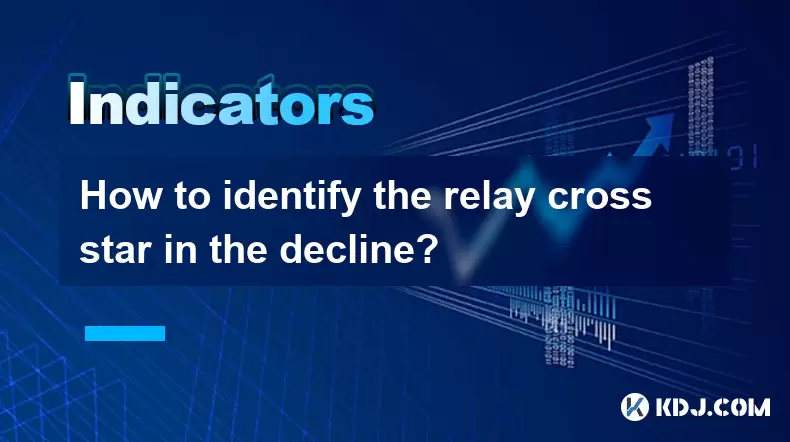
Understanding the Relay Cross Star in Cryptocurrency Decline
In the dynamic world of cryptocurrencies, understanding technical analysis patterns can provide valuable insights into market trends and potential reversal points. One such pattern is the Relay Cross Star, which can be particularly significant during a market decline. This article will guide you through identifying and interpreting the Relay Cross Star in a declining cryptocurrency market, helping you make more informed trading decisions.
What is a Relay Cross Star?
A Relay Cross Star is a candlestick pattern that signals a potential continuation of a trend after a brief pause. In the context of a declining market, this pattern can indicate that the downward trend will continue after a minor bullish interruption. The pattern consists of three candles:
- The first candle is a long bearish candle, indicating strong selling pressure.
- The second candle is a small bullish or bearish candle that gaps down from the first candle, showing a pause in the decline.
- The third candle is another long bearish candle that closes near or below the first candle's close, confirming the continuation of the downtrend.
Identifying the Relay Cross Star in a Declining Market
To accurately identify a Relay Cross Star during a market decline, follow these steps:
- Analyze the trend: Ensure that the market is in a clear downtrend. Look for a series of lower highs and lower lows on the price chart.
- Identify the first candle: Look for a long bearish candle that represents strong selling pressure. This candle should close significantly lower than its open.
- Observe the second candle: The second candle should be a small candle that gaps down from the first candle. It can be either bullish or bearish, but its body should be relatively small compared to the first candle.
- Confirm with the third candle: The third candle should be another long bearish candle that closes near or below the first candle's close. This confirms that the downtrend is likely to continue.
Interpreting the Relay Cross Star in Cryptocurrency Trading
Once you have identified a Relay Cross Star in a declining market, it's crucial to interpret its implications for your trading strategy. This pattern suggests that the brief bullish interruption is not strong enough to reverse the downtrend, and sellers are likely to regain control.
- Short selling opportunity: The confirmation of the downtrend continuation can be an opportunity to enter short positions, anticipating further price declines.
- Risk management: Always set stop-loss orders above the high of the second candle to manage potential losses if the market unexpectedly reverses.
- Volume analysis: Confirm the pattern with volume analysis. Higher volume on the first and third candles compared to the second candle strengthens the validity of the pattern.
Practical Example of Identifying a Relay Cross Star
Let's walk through a practical example of identifying a Relay Cross Star in a declining cryptocurrency market:
- Select a cryptocurrency and time frame: Choose a cryptocurrency like Bitcoin (BTC) and a daily time frame chart.
- Analyze the trend: Notice that Bitcoin has been in a downtrend for several weeks, with a series of lower highs and lower lows.
- Identify the first candle: On a specific day, you observe a long bearish candle that closes much lower than its open, indicating strong selling pressure.
- Observe the second candle: The next day, a small bullish candle appears, gapping down from the first candle's close. The body of this candle is significantly smaller than the first candle.
- Confirm with the third candle: On the third day, another long bearish candle forms, closing near or below the first candle's close. This confirms the Relay Cross Star pattern.
Using Technical Indicators to Confirm the Relay Cross Star
To enhance the reliability of the Relay Cross Star pattern, you can use technical indicators to confirm the trend and potential continuation. Some useful indicators include:
- Moving Averages: A bearish crossover of shorter-term moving averages (e.g., 50-day) below longer-term moving averages (e.g., 200-day) can confirm the downtrend.
- Relative Strength Index (RSI): An RSI below 50 and trending downward can indicate bearish momentum.
- MACD: A bearish crossover of the MACD line below the signal line can reinforce the likelihood of a continued downtrend.
Practical Tips for Trading the Relay Cross Star
When trading based on the Relay Cross Star pattern, consider the following tips to enhance your strategy:
- Wait for confirmation: Do not enter trades based solely on the pattern. Wait for the third candle to close to confirm the pattern before taking action.
- Use multiple time frames: Analyze the pattern on multiple time frames to ensure it aligns with the overall trend.
- Combine with other patterns: Look for other bearish patterns, such as head and shoulders or double tops, to increase the probability of a successful trade.
Frequently Asked Questions
Q1: Can the Relay Cross Star appear in an uptrend?
While the Relay Cross Star is typically associated with a downtrend, it can theoretically appear in an uptrend as well. However, in an uptrend, it would signal a continuation of the upward movement after a brief bearish pause. Always consider the broader market context when identifying and interpreting this pattern.
Q2: How reliable is the Relay Cross Star pattern?
The reliability of the Relay Cross Star pattern can vary depending on market conditions and the timeframe used. It is generally considered a reliable continuation pattern, but it should always be used in conjunction with other technical analysis tools and indicators for the best results.
Q3: Can the Relay Cross Star be used for all cryptocurrencies?
Yes, the Relay Cross Star pattern can be applied to any cryptocurrency. However, the effectiveness of the pattern may vary depending on the liquidity and volatility of the specific cryptocurrency. More liquid and less volatile cryptocurrencies tend to produce more reliable patterns.
Q4: What are the common mistakes traders make when using the Relay Cross Star?
One common mistake is entering trades too early, before the third candle confirms the pattern. Another mistake is ignoring the broader market context and not using additional technical indicators to validate the pattern. Always ensure you have a comprehensive analysis before making trading decisions based on this pattern.
Disclaimer:info@kdj.com
The information provided is not trading advice. kdj.com does not assume any responsibility for any investments made based on the information provided in this article. Cryptocurrencies are highly volatile and it is highly recommended that you invest with caution after thorough research!
If you believe that the content used on this website infringes your copyright, please contact us immediately (info@kdj.com) and we will delete it promptly.
- Expert Predicts When Bitcoin (BTC) Price Could Hit a New All-Time High
- 2025-06-13 02:00:20
- US President Donald Trump Virtually Spoke at the Coinbase State of Crypto Summit
- 2025-06-13 02:00:20
- Arctic Pablo Coin (APC) Explodes Onto the Meme Coin Stage as One of the Top New Meme Coins for Exponential Returns
- 2025-06-13 01:55:12
- Litecoin (LTC) Price Nosedives as Bollinger Bands Signal Lingering Bearish Sentiment
- 2025-06-13 01:55:12
- DeFi Development Corp. (DFDV) Secures $5 Billion Equity Line of Credit from RK Capital Management
- 2025-06-13 01:50:12
- Tether Expands Gold Strategy with Stake in Elemental Altus Royalties
- 2025-06-13 01:50:12
Related knowledge
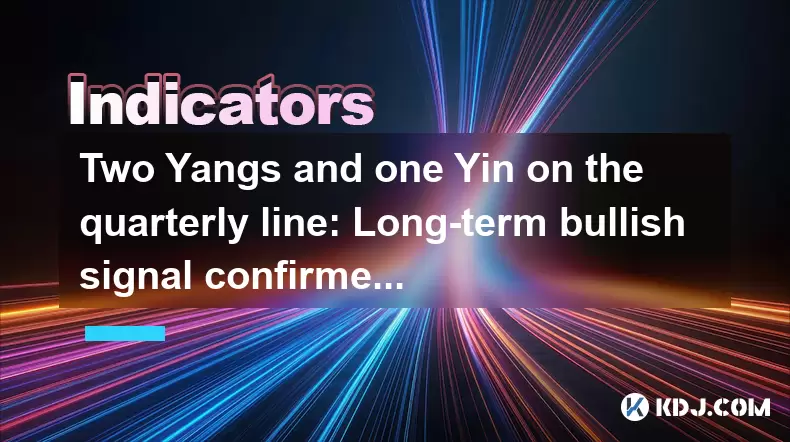
Two Yangs and one Yin on the quarterly line: Long-term bullish signal confirmed?
Jun 12,2025 at 07:00am
Understanding the 'Two Yangs and One Yin' Candlestick PatternIn technical analysis, candlestick patterns play a pivotal role in identifying potential market reversals or continuations. The 'Two Yangs and One Yin' pattern is one such formation that traders often observe on longer timeframes like the quarterly chart. This pattern consists of two bullish (...
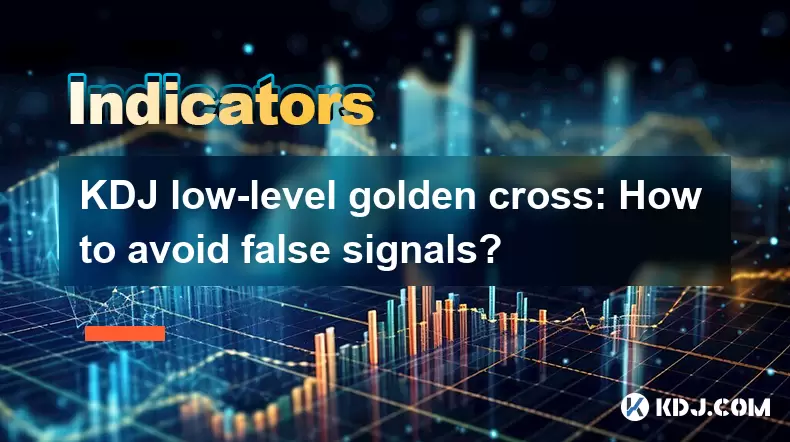
KDJ low-level golden cross: How to avoid false signals?
Jun 12,2025 at 08:21am
Understanding the KDJ IndicatorThe KDJ indicator, also known as the stochastic oscillator, is a momentum-based technical analysis tool widely used in cryptocurrency trading. It consists of three lines: the %K line (fast stochastic), the %D line (slow stochastic), and the %J line (divergence value). These lines oscillate between 0 and 100, helping trader...

Bottom-up volume stagnation: Is it accumulation or heavy selling pressure?
Jun 12,2025 at 01:42pm
What Is Bottom-Up Volume Stagnation?Bottom-up volume stagnation refers to a specific pattern observed in cryptocurrency trading charts where the price of an asset moves sideways or slightly downward, and trading volume remains consistently low over an extended period. This phenomenon is often seen after a sharp price drop or during a prolonged bear mark...
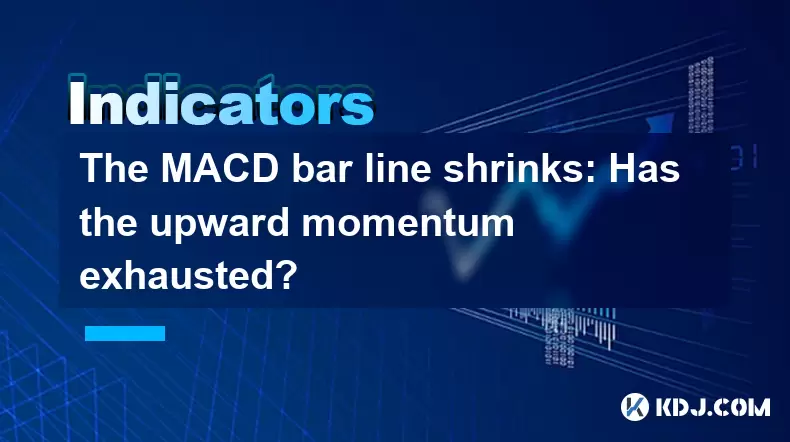
The MACD bar line shrinks: Has the upward momentum exhausted?
Jun 12,2025 at 12:49am
Understanding the MACD Bar LineThe Moving Average Convergence Divergence (MACD) is a widely used technical indicator in cryptocurrency trading. It consists of three main components: the MACD line, the signal line, and the MACD histogram (also known as the bar line). The MACD bar line represents the difference between the MACD line and the signal line. W...

The chip peak moves up: Is the main force quietly shipping?
Jun 12,2025 at 01:01am
Understanding the Chip Peak Movement in Cryptocurrency MiningIn recent years, the chip peak movement has become a critical topic within the cryptocurrency mining community. This phrase typically refers to the point at which mining hardware reaches its maximum efficiency and output capacity. When this peak shifts upward, it often signals changes in the s...
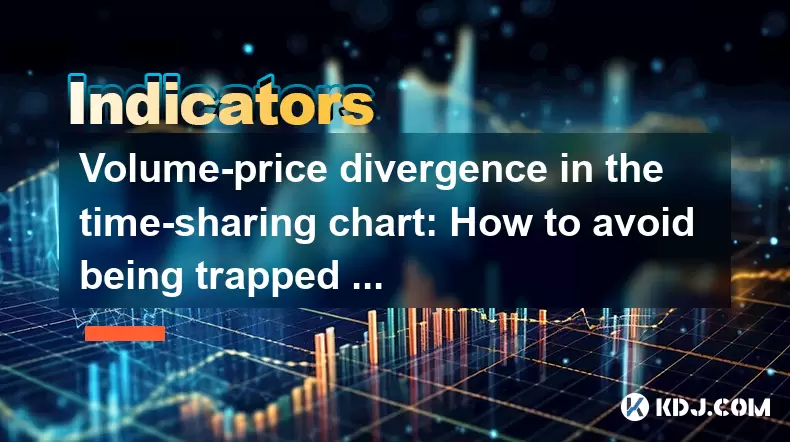
Volume-price divergence in the time-sharing chart: How to avoid being trapped on the same day?
Jun 12,2025 at 07:28pm
Understanding Volume-Price Divergence in Cryptocurrency TradingVolume-price divergence is a critical concept in technical analysis, especially within the fast-moving world of cryptocurrency trading. It refers to a situation where price movement and trading volume move in opposite directions. For instance, if the price of a cryptocurrency is rising while...

Two Yangs and one Yin on the quarterly line: Long-term bullish signal confirmed?
Jun 12,2025 at 07:00am
Understanding the 'Two Yangs and One Yin' Candlestick PatternIn technical analysis, candlestick patterns play a pivotal role in identifying potential market reversals or continuations. The 'Two Yangs and One Yin' pattern is one such formation that traders often observe on longer timeframes like the quarterly chart. This pattern consists of two bullish (...

KDJ low-level golden cross: How to avoid false signals?
Jun 12,2025 at 08:21am
Understanding the KDJ IndicatorThe KDJ indicator, also known as the stochastic oscillator, is a momentum-based technical analysis tool widely used in cryptocurrency trading. It consists of three lines: the %K line (fast stochastic), the %D line (slow stochastic), and the %J line (divergence value). These lines oscillate between 0 and 100, helping trader...

Bottom-up volume stagnation: Is it accumulation or heavy selling pressure?
Jun 12,2025 at 01:42pm
What Is Bottom-Up Volume Stagnation?Bottom-up volume stagnation refers to a specific pattern observed in cryptocurrency trading charts where the price of an asset moves sideways or slightly downward, and trading volume remains consistently low over an extended period. This phenomenon is often seen after a sharp price drop or during a prolonged bear mark...

The MACD bar line shrinks: Has the upward momentum exhausted?
Jun 12,2025 at 12:49am
Understanding the MACD Bar LineThe Moving Average Convergence Divergence (MACD) is a widely used technical indicator in cryptocurrency trading. It consists of three main components: the MACD line, the signal line, and the MACD histogram (also known as the bar line). The MACD bar line represents the difference between the MACD line and the signal line. W...

The chip peak moves up: Is the main force quietly shipping?
Jun 12,2025 at 01:01am
Understanding the Chip Peak Movement in Cryptocurrency MiningIn recent years, the chip peak movement has become a critical topic within the cryptocurrency mining community. This phrase typically refers to the point at which mining hardware reaches its maximum efficiency and output capacity. When this peak shifts upward, it often signals changes in the s...

Volume-price divergence in the time-sharing chart: How to avoid being trapped on the same day?
Jun 12,2025 at 07:28pm
Understanding Volume-Price Divergence in Cryptocurrency TradingVolume-price divergence is a critical concept in technical analysis, especially within the fast-moving world of cryptocurrency trading. It refers to a situation where price movement and trading volume move in opposite directions. For instance, if the price of a cryptocurrency is rising while...
See all articles

























































































